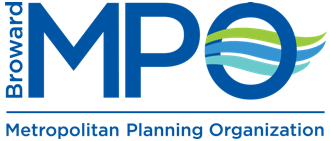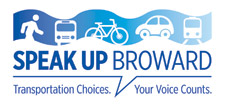Broward’s transportation system takes many forms – planes, trains, boats, buses and automobiles. Here is how we move around Broward today.
Airport
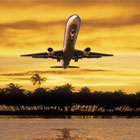
Fort Lauderdale/Hollywood International (FLL) Airport is a large hub core airport in the US with over 17.6 million enplanements in 2018. On average, over 80 thousand people travel through FLL daily on over 30 airlines operating more than 700 flights. Heavy traffic holidays can serve over 400 thousand passengers. The economic impact of FLL is roughly $2.4 billion each year, with the airport supporting 37,000 jobs.
Bicycle and Pedestrian Facilities

Everyone is a pedestrian during at least one part of their commute. Broward has an extensive, growing system of bikeways, greenways, and pedestrian facilities. Crosswalks and signals are being installed throughout Broward every year to ensure safe travel by all vehicles. Safe and adequate connectivity is especially important where people meet transit service. The 2035 Transformational Long Range Transportation Plan prioritized all projects identified in countywide master plans for these facilities. As a result of this shift, the Broward Complete Streets program was born in 2013. The Broward MPO recently adopted the MPO's Broward Complete Streets Master Plan in November 2019 to lay out a complete network of Broward's Complete Streets network and strategically plan the network to connect programmed projects to 'bundled areas' of interest (areas which include a concentration of institutions, business centers, etc.) through a list of proposed projects to fill in the gaps. These projects plan to address the needs of all users, including bicyclists and pedestrians. In addition, to planning for a complete network, the MPO has provided our municipal partners with Complete Streets Guidelines and trainings and for implementing complete streets projects. For more on this effort, visit the complete streets page at BetterStreetsBetterBroward.org.
Local Bus Service
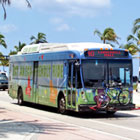
Broward County Transit operates 3 limited express (Breeze) and 33 local fixed routes within a 410 square mile service area using 291 fixed route buses. They also assist 18 cities to provide 47 community routes operating 77 small-size buses, and contract out paratransit service to provide mobility to qualified disabled persons on 218 vehicles. Every weekday, approximately 130 thousand people take a trip on transit service provided by Broward County Transit. Every year, close to 40 million passengers travel on all 42 local and express fixed routes operated with a total fleet of 397 buses. Broward County Transit has recently adopted their 2020-29 Transit Development Plan. Click here for full information. To contact BCT, please call (954) 357-8400 or email cservice@broward.org.
Community Shuttles
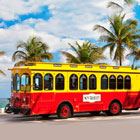
Broward County Transit also assists with 50 community bus routes operated by 18 cities carrying close to 2.4 million people each year, and they transport 700,000 paratransit trips each year. Broward also has a number of private shuttles and Transportation Management Associations (TMA) that provide important community access, such as Sun Trolley in Fort Lauderdale and the South Florida Education Center TMA that provides access among the universities and colleges in the Town of Davie.
Express Bus Service
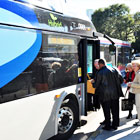
In January 2010, Broward County Transit and the Florida Department of Transportation introduced the popular Express Bus service that travels from western Broward into Miami which carries close to 2,000 persons each day on 29 express buses designed for comfort with WiFi connectivity. Six Express Bus routes are available. The 595 Express routes connect the cities of Sunrise and Weston to Miami-Dade County. The 95 Express and 75 Express routes provide additional connectivity between those destinations in Miami and parts of southern and eastern Broward with morning routes leaving from Fort Lauderdale, Hollywood, Miramar, and Pembroke Pines.
Freight Rail
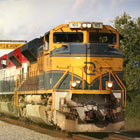
Fort Lauderdale/Hollywood International Airport and Port Everglades are Broward’s most significant cargo hubs. Freight going to and from these facilities on trucks or trains is then shipped to destinations both domestic and international. Florida East Coast Railway partnered with Port Everglades and constructed an Intermodal Container Transfer Facility (ICTF). This facility has been in operation since 2014 and has provided for more efficient transfers of freight from vessels to trains to trucks. The ICTF has also improved the connectivity with shipping clients, has increased the Port’s competitive advantage and has reduced truck traffic on local roadways. It has truly been a win-win for business and the environment. CSX Transportation also operates freight service on the South Florida Rail Corridor, the same corridor that runs Amtrak and Tri-Rail passenger rail service.
Passenger Rail
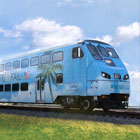
There are several options for passenget rail in South Florida. South Florida Regional Transportation Authority (SFRTA) operates a tri-county commuter rail service through Broward known as Tri-Rail which carries over fifteen thousand riders each day, a total of over 4.4 million persons each year. Tri-Rail operates along the CSX corridor and also runs shuttle service to connect with its stations. Brightline, a privately owned intercity train travel option for commuters and vacationers in one of the most populous and visited regions of the United States. Each South Florida train station served by Brightline is strategically located near local transportation options, providing passengers convenient access to the top destinations located within each city. Brightline opeartes along the FEC Railway corridor, which goes through many esatern communities in Florida. Amtrak runs Silver Service and Palmetto intercity passenger rail routes from Miami through Fort Lauderdale on the South Florida Rail Corridor north to New York City through Tampa and Orlando. The Fort Lauderdale station is located southwest of Broward Boulevard and I-95 at the same location with Tri-Rail and BCT bus service. Amtrak meets intercity rail passengers at two other stations in Hollywood and Deerfield Beach.
Seaport
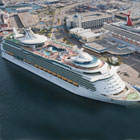
Port Everglades is called South Florida’s Powerhouse Port for many reasons - serving as a port of call for international cargo and cruise passenger ships, including the largest cruise ships in the world –Oasis of The Seas and Allure of The Seas. With its containerized cargo, liquid and dry/neo-bulk commodities, and cruise activities - Port Everglades is one of the most diversified seaports in the State of Florida. In Fiscal Year 2018, the Port had operating revenues ofapproximately$161.7 million. Port Everglades is an Enterprise Fund, which means it is a self-supporting seaport and all operations are paid for through revenues and not through tax dollars. It also is the site of the largest Foreign-Trade Zone (FTZ #25) in the State of Florida, and had the largest FTZ exports to Latin America for the past two years. The Port leases land and space to the private sector, including FTZ operators who generate about 9 percent of total Port revenue. In 2018, over 3.8 million cruise passengers said ‘bon voyage’ from Port Everglades. That same year, Port Everglades handled more than to 7 million tons in total containerized cargo (923.6 twenty-foot equivalent units [TEUs]). Port Everglades is also the primary storage and distribution seaport for refined petroleum product in South Florida. Petroleum activity is the second largest source of revenue for the Port. In Fiscal Year (FY) 2018 Port Everglades had approximately $36 million in revenues related petroleum activity. Every day, millions of gallons of petroleum product are delivered on oceangoing tankers to Port Everglades for distribution to facilities in a 12-county area. Jet fuel destined for South Florida’s three international airports and smaller regional airports is also distributed from Port Everglades. While Port Everglades does not rely on local tax dollars for operations, it does rely upon the State and the Federal government for financial contributions to support large capital infrastructure projects.
Water Transportation
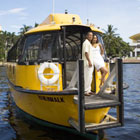
Water transportation is one of the first forms of transportation in Broward, dating back to the time of settlers in what would become today's cities of Fort Lauderdale and Dania Beach. Today, several options exist for those looking to cruise along the water. Riverwalk Water Trolley, is operated by the Downtown Fort Lauderdale Transportation Management Association (DFLTMA) along the New River in Downtown Fort Lauderdale. This free service is made possible through a partnership with the City of Fort Lauderdale, Downtown Development Authority, and Riverwalk Fort Lauderdale. Water Taxi, a privately owned service, provides water shuttle services in Fort Lauderdale and Hollywood year-round. This service is marketed to tourists as cruises and all-day fares that allow on/off use from multiple stops near popular restaurants and bars who offer discounts to ticket-holders.
Roadways
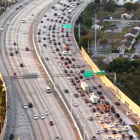
From our two-lane neighborhood streets to high-capacity expressways, Broward has 5,128 miles of public roads. Over 43 million miles are traveled each day on those roads by people who live in and travel through Broward. Each year, our commuters spend 38 hours sitting in traffic. Our travel time to work was about 30 minutes in 2010 – up from 23 minutes in 1990. The Florida Department of Transportation (FDOT), Broward County and our 31 municipalities work together to provide our roadway network and traffic signalization system. Intelligent Transportation Systems including synchronized traffic lights are a part of moving traffic more efficiently through our County. And, let us not forget that roadways serve all users, not just those in vehicles! Bicycle and pedestrian lanes and crosswalks are important design features to ensure safe access for all roadway users. A concept known as "Complete Streets" provides for a balance of design that addresses ways to provide for different types of users.
Toll Roads
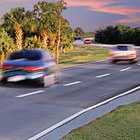
Our earliest toll roads came to South Florida with the Sunshine State Parkway in the 1950s, the predecessor to Florida’s Turnpike Enterprise. Today, in addition to the north-south Florida'sTurnpike, we have the Sawgrass Expressway built in the late 1980s and the more recent I-595 Reversible Managed Lanes, extension of the popular 95 Express Lanes from Miami north into Broward, and managed lanes on I-75 South into Miami-Dade County. These corridors also make faster, more reliable express bus transit service possible. These congestion priced lanes will bring a new dimension to our high speed, high capacity, and limited access interstate highway system.
